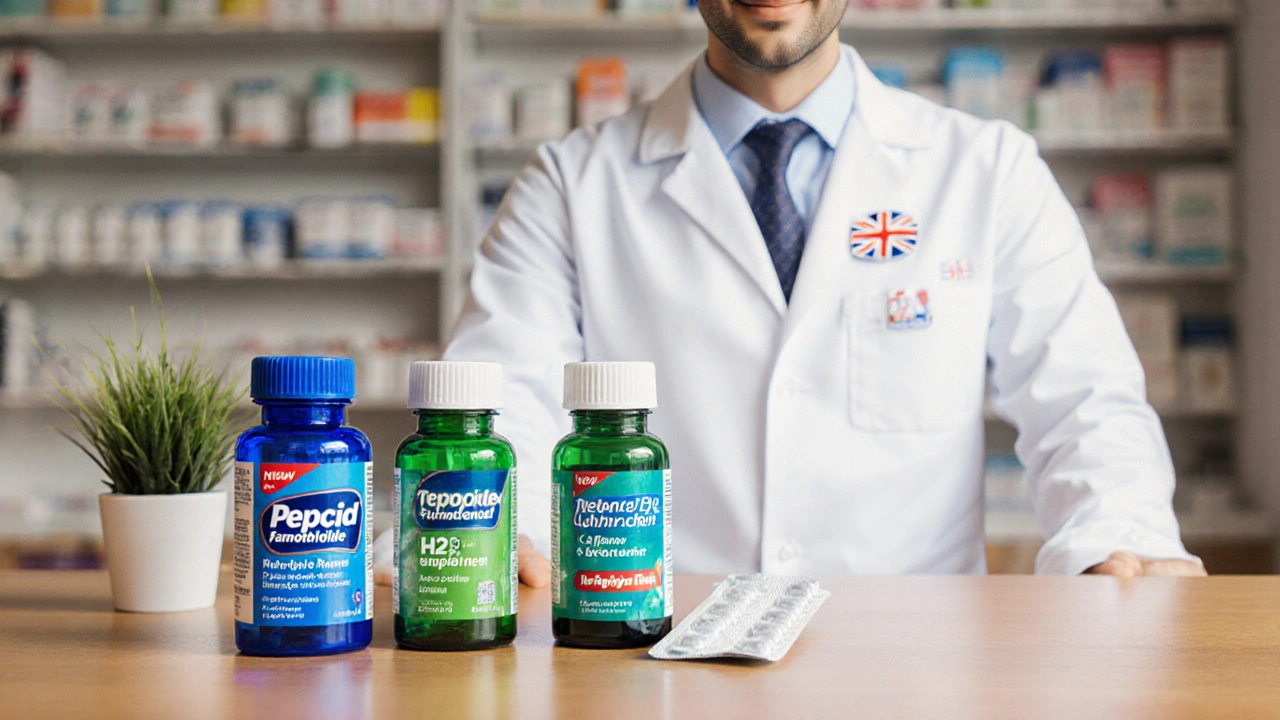Over-the-Counter Heartburn Relief: What Works and How to Use It
Heartburn can hit you out of nowhere—after a big meal, a late coffee, or even stress. The good news is you don’t always need a prescription to feel better. Over-the-counter (OTC) options are ready at the pharmacy, and most people see relief within minutes. Below we’ll walk through the most common OTC products, how they differ, and what to keep in mind so you avoid side effects.
Common OTC Choices
When you stroll down the aisle, you’ll see three main groups of heartburn relievers: antacids, H2 blockers, and proton‑pump inhibitors (PPIs). Each works a little differently, so you can match the product to how bad your symptoms are.
Antacids like Tums, Rolaids, or Maalox neutralize stomach acid right away. They’re great for occasional, mild burns that last an hour or two. Because they act fast, you can take them with food or after a meal. The downside is the effect wears off quickly, and taking too many can cause constipation or diarrhea.
H2 blockers such as ranitidine (was Zantac) or famotidine (Pepcid) reduce the amount of acid your stomach makes. They don’t work instantly, but you’ll notice a calmer stomach within 30‑60 minutes, and the relief can last up to 12 hours. These are a solid pick if you get heartburn a few times a week.
OTC PPIs like omeprazole (Prilosec) or lansoprazole (Prevacid) block the final step of acid production. They take longer—usually a day or two—to kick in, but they’re the strongest option for frequent or severe heartburn. Most doctors suggest using them for no more than 14 days without a prescription check.
How to Use Them Safely
Even OTC meds can cause problems if you ignore the label. Here are practical steps to keep you safe:
- Read the dosage instructions. For antacids, most adults take 2‑4 tablets after a meal; more can upset your electrolytes.
- Don’t mix antacids with certain antibiotics or thyroid meds unless your doctor says it’s okay—antacids can lower absorption.
- Take H2 blockers 30 minutes before meals if you’re trying to prevent a burn, or right after symptoms start for relief.
- If you choose a PPI, start it in the morning and stick to the same time each day. Avoid using it on an empty stomach unless the label says otherwise.
- Watch for red‑flag symptoms: pain that wakes you at night, difficulty swallowing, or vomiting blood. Those need a doctor’s eye, not a pill.
A few lifestyle tweaks can boost the effect of any OTC product. Eating smaller portions, avoiding lying down for two hours after meals, and cutting back on coffee, chocolate, and spicy foods often makes a big difference. Also, raise the head of your bed by 6‑8 inches if night‑time heartburn is a pattern.
In short, you have three solid OTC paths: grab an antacid for fast, short‑term relief; reach for an H2 blocker if you want longer coverage without a prescription; or try a short course of a PPI for stubborn, frequent burns. Pair the medication with simple diet changes, and you’ll likely keep heartburn in the background where it belongs.
Remember, OTC meds are safe for most people, but they’re not a free pass to ignore persistent symptoms. If you need heartburn relief for more than two weeks, or if the pain feels like it’s getting worse, schedule a check‑up. Your doctor can rule out more serious issues and help you find a long‑term plan that fits your life.
Now you’ve got the basics, go ahead and pick the right OTC option for your situation. Quick relief is only a few shelves away—just choose the product that matches how often you get burned and follow the label. Happy, comfortable digestion awaits!
Pepcid (Famotidine) vs Other Acid‑Reducer Options: A Practical Comparison
Discover how Pepcid (famotidine) stacks up against other H2 blockers and proton‑pump inhibitors. Get clear guidance on uses, side effects, and choosing the right acid‑reducer.
